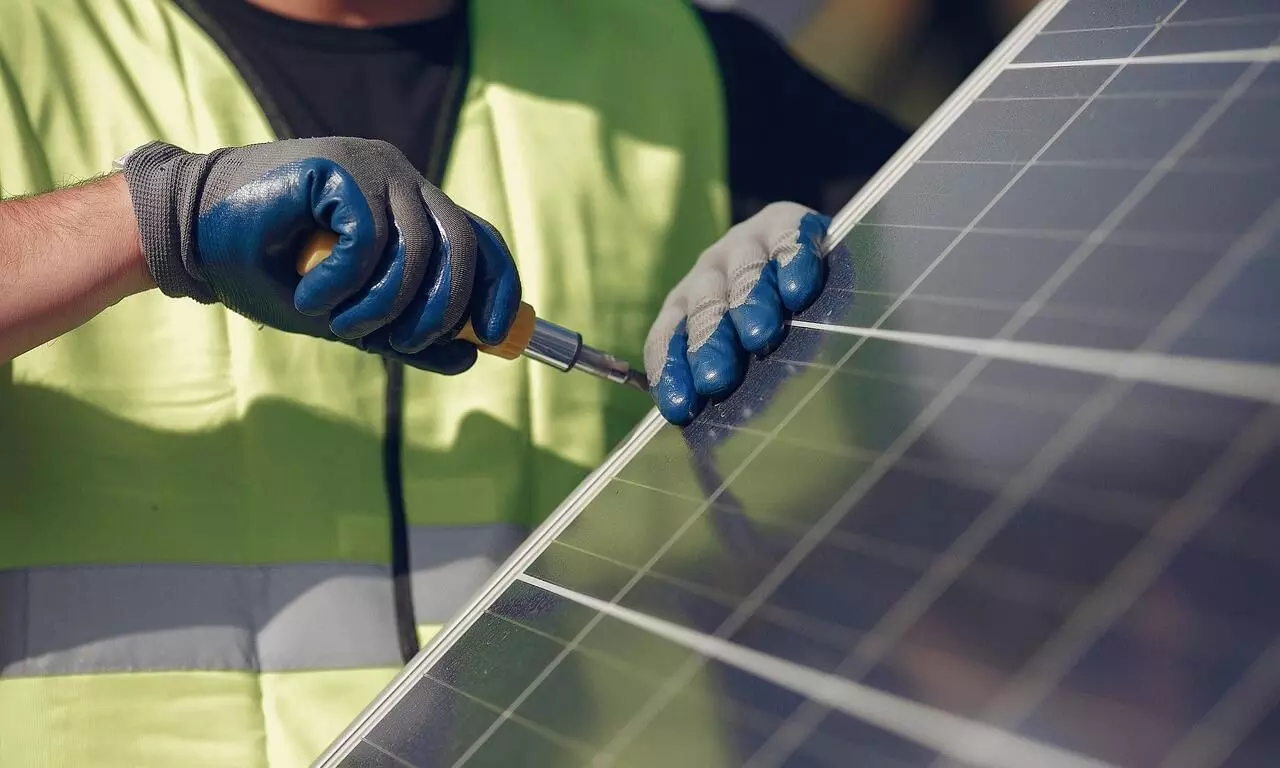Rooftop Solar 2.0 set to illuminate homes in India: Power Minister RK Singh
Given the higher subsidy provisioned for the Northeast under the ambitious residential solar rooftop scheme, the region’s 5.7 crore plus people can especially benefit from it in multifarious ways.

Representational Image
New Delhi, Feb 5: In a scheme that is expected to provide free electricity to the country’s poor and low-income households, beneficiaries would be getting a solar installation on their rooftops virtually for free, Raj Kumar Singh, Union Minister for Power & New and Renewable Energy has said.
“The [intended] beneficiaries will be identified through surveys of their rooftops. We are initially targeting one crore beneficiaries. However, this number is likely to go up,” Singh told The Assam Tribune during a media briefing a day after the Interim Budget.
Under the country’s commitment to becoming carbon neutral by 2070, Prime Minister Modi announced a new solar rooftop scheme during the consecration ceremony of the Ram Mandir in Ayodhya on January 22. Nirmala Sitharaman, Union Minister of Finance, shared more details on her scheme in her Interim Budget speech on January 1.
“You can call it Rooftop Solar 2.0, where the PM Suryodaya Yojana will focus on consumers using less than 300 units of electricity. These many units are consumed by either the poor or lower-middle-class sections,” said Singh.
The target group for the scheme typically consumes nearly 130 units of electricity in a month.
“We are currently looking at increasing the subsidy by up to 60 per cent from 40 per cent. However, the balance 40 per cent loan won’t be taken by the household,” said Singh, adding, “For the Northeast and the hill states the subsidy will be 10 per cent more to reach 70 per cent.”
It costs nearly Rs 50,000 to put up a 1kW (kilowatt) rooftop solar unit proposed under the scheme.
Special purpose vehicles (SPV)s would be set up by Central Public Sector Enterprises (CPSE) active in the power sector to raise bank loans for the rooftop installation. The SPV will set excess electricity generated to a distribution company to pay off the loan over ten years.
Upon payment of the loan amount, the CPSE will exit the project, with the homeowner getting to reap the benefits of the excess units generated by their installation.
India, the world’s third-largest energy consumer after the US and China, first launched a rooftop scheme for the housing sector in 2014, the year Prime Minister Narendra Modi was elected to power. The scheme has resulted in 2.7 GW of installed capacity across 670,000 households across the country, according to Ministry of New and Renewable Energy data.
Advantage Northeast
The Suryodaya scheme can especially work to Northeast India’s advantage in several ways.
The region has historically reported the lowest per capita consumption of electricity. In FY2021-22, the figure was 426 kilowatt hour (kWh), substantially less compared to the national average of 1,255 kWh, according to data from the regulator, the Central Electricity Authority (CEA).
Among the eight states in the region, Sikkim had the highest per capita consumption at 1011 kWh, while Assam had the lowest at 384 kWh.
With the government looking at leveraging the strategic and economic potential of the region to develop it as the Gateway into the countries of South and South East Asia as part of its Act East Policy, improving electricity access to over 5.17 crore residents of the region has become a priority.
In recent years, the region has also been developing as a major hub for Cross Border Trade in electricity (CBTE). In FY2021-22, 1003 Gigawatt Hours (GWh) of electricity were exported to Bangladesh and 9.87 GWh to Myanmar, respectively.
The surplus power produced by thousands of rooftop-based microgrids expected to come up in the region post the scheme’s rollout can also be used to increase electricity exports.
This will help create a huge class of energy prosumers-consumers referred to as ‘prosumers’.
“These efforts will create a brighter and more environmentally friendly future for homes and businesses alike. It’s an opportune time and a much-needed step to convert the consumer into a prosumer, which will improve the quality of livelihood, impact domestic savings and help achieve objectives of greater good,” Brajesh Singh, Country President at the global advisory Arthur D Little told The Assam Tribune.
Moreover, the sloped roofs of dwellings in the country’s Northeast and hilly states make them ideal for the installation of solar rooftops. Such slanting roofs not only help in boosting energy production but also allow for efficient use of space.
